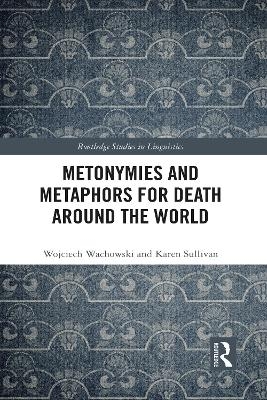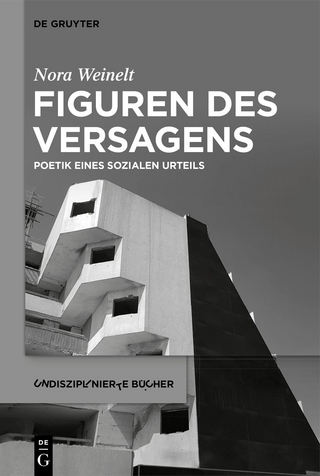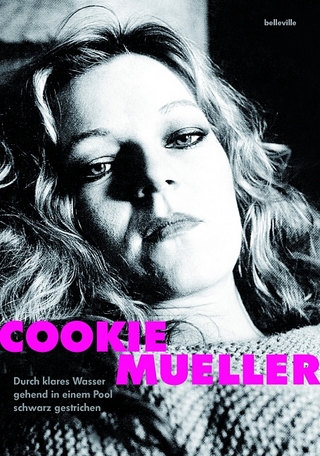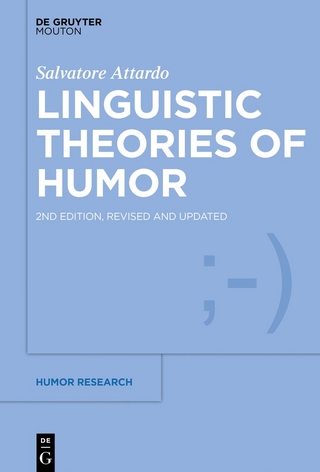
Metonymies and Metaphors for Death Around the World
Routledge (Verlag)
978-1-032-02531-5 (ISBN)
This book reflects on the ways in which metonymy and metaphor are used conceptually and linguistically to mitigate the more difficult dimensions of death and dying, setting out a unique line of research within Conceptual Metaphor Theory.
The volume argues that metonymic and metaphoric descriptions of death and dying reflect taboos, concealment, and other considerations not found in figurative descriptions of life, producing distinct forms of euphemism, frames, and mental spaces particular to conceptualizations of death.
The first part takes a closer look at metonymy to illuminate the ways in which it allows a person to zoom in on death’s more inoffensive dimensions or zoom out from its more troubling aspects. The second part focuses on the more palatable concepts which metaphorically structure and help to better understand death.
A wide range of classical and modern examples from European, Asian, Australian, and African languages and cultures showcase points of overlap and divergence.
Opening up new lines of inquiry into research on death and dying and offering a linguistically focused complement to anthropological and religious studies on the topic, this book will be of interest to scholars in cognitive linguistics, sociolinguistics, cross-cultural communication, and cultural studies.
Wojciech Wachowski is Assistant Professor in the Institute of Modern Languages and Applied Linguistics at Kazimierz Wielki University in Bydgoszcz, Poland. Karen Sullivan is a Senior Lecturer in Linguistics at the University of Queensland, Australia.
Table of Contents
Chapter 1. Introduction
1.1 Why not be direct about death?
1.2 Taboo, euphemism and dysphemism
1.3 Highlighting and hiding
1.4 Do metonymy and metaphor let us achieve a long-lasting backgrounding effect?
1.5 The structure of the book
1.6 Sources and methods
PART I METONYMY
Chapter 2. Why have metonymies for death?
2.1 Types of metonymic relation
2.2 Why are part for whole and whole for part metonymies so important?
2.3 Why are part for whole and whole for part used to talk about death?
2.4 How do we select the source?
2.5 Conclusion
Chapter 3. How is the part for whole used to talk about death?
3.1 The initial stage
3.2 The central and post-central stage
3.3 The final stage
3.4 The post-final stage – the effect of death
3.5 Multiple part for whole metonymies
3.6 Part for whole in metaphor and blending
3.7 Form metonymy
3.8 Conclusion
Chapter 4. How is the whole for part used to talk about death?
4.1 Whole for part – euphemising death and dying
4.2 Whole for part and deliberately caused death
4.3 Whole for part and suicide
4.4 Whole for part in militarese and other specialised discourse genres
4.5 Whole for part – multiple levels of euphemism
4.6 Whole for part euphemisms for death-related concepts
4.3 Conclusion
PART II METAPHOR
Chapter 5. Why Use Metaphors for Death?
Chapter 6. The Death of Sleep
6.1 The experiential basis of death is sleep
6.2 The state of the ‘soul’ during death and sleep
6.3 Funerary customs that extend the correspondences between death and sleep
6.4 Dreams and the afterlife
6.5 Awakening and resurrection
6.6 The manifestations of the death is sleep metaphor
6.7 Examples of blending
6.8 Conclusion
Chapter 7. Darkness, night and winter
7.1 A lifetime is a fire
7.2 A lifetime is a year and a lifetime is a day
7.3 Blending
7.4 Conclusion
Chapter 8. The End of a Journey
8.1 The deceased are 'gone', but where did they 'go'?
8.2 The Source of the voyage in death is departure
8.3 'Going' to Heaven, eternity, or another Goal
8.4 How do we 'get there'? The Path in death is departure
8.5 When the body is a container
8.6 'Going to one’s grave' as a conceptual blend
8.7 Conclusion: To what extent are we all going together?
Chapter 9. Game Over
9.1 Death as a game/entertainment
9.2 Cultural frames in death is the end of a game/entertainment
9.3 Death as a player: A conceptual blend
9.4 The deceased as a player – a conceptual blend
9.5 Conclusion
Chapter 10. The Unseemly Sights and Sounds of Death
10.1 Position of the body
10.2 The sounds of life and death
10.3 Burial of the body
10.4 Funerary rites and artefacts
10.5 Manner of death
10.6 Processes of decay
10.7 Blending
10.8 Conclusion
Chapter 11. Conclusion
11.1 The hiding power of death metonymies
11.2 Near-universals in the human experience of death
References
Attributions
| Erscheinungsdatum | 28.09.2023 |
|---|---|
| Reihe/Serie | Routledge Studies in Linguistics |
| Zusatzinfo | 8 Line drawings, black and white; 11 Halftones, black and white; 19 Illustrations, black and white |
| Verlagsort | London |
| Sprache | englisch |
| Maße | 152 x 229 mm |
| Gewicht | 330 g |
| Themenwelt | Geisteswissenschaften ► Geschichte |
| Geisteswissenschaften ► Sprach- / Literaturwissenschaft ► Anglistik / Amerikanistik | |
| Geisteswissenschaften ► Sprach- / Literaturwissenschaft ► Literaturwissenschaft | |
| Geisteswissenschaften ► Sprach- / Literaturwissenschaft ► Sprachwissenschaft | |
| Sozialwissenschaften | |
| ISBN-10 | 1-032-02531-X / 103202531X |
| ISBN-13 | 978-1-032-02531-5 / 9781032025315 |
| Zustand | Neuware |
| Informationen gemäß Produktsicherheitsverordnung (GPSR) | |
| Haben Sie eine Frage zum Produkt? |
aus dem Bereich


